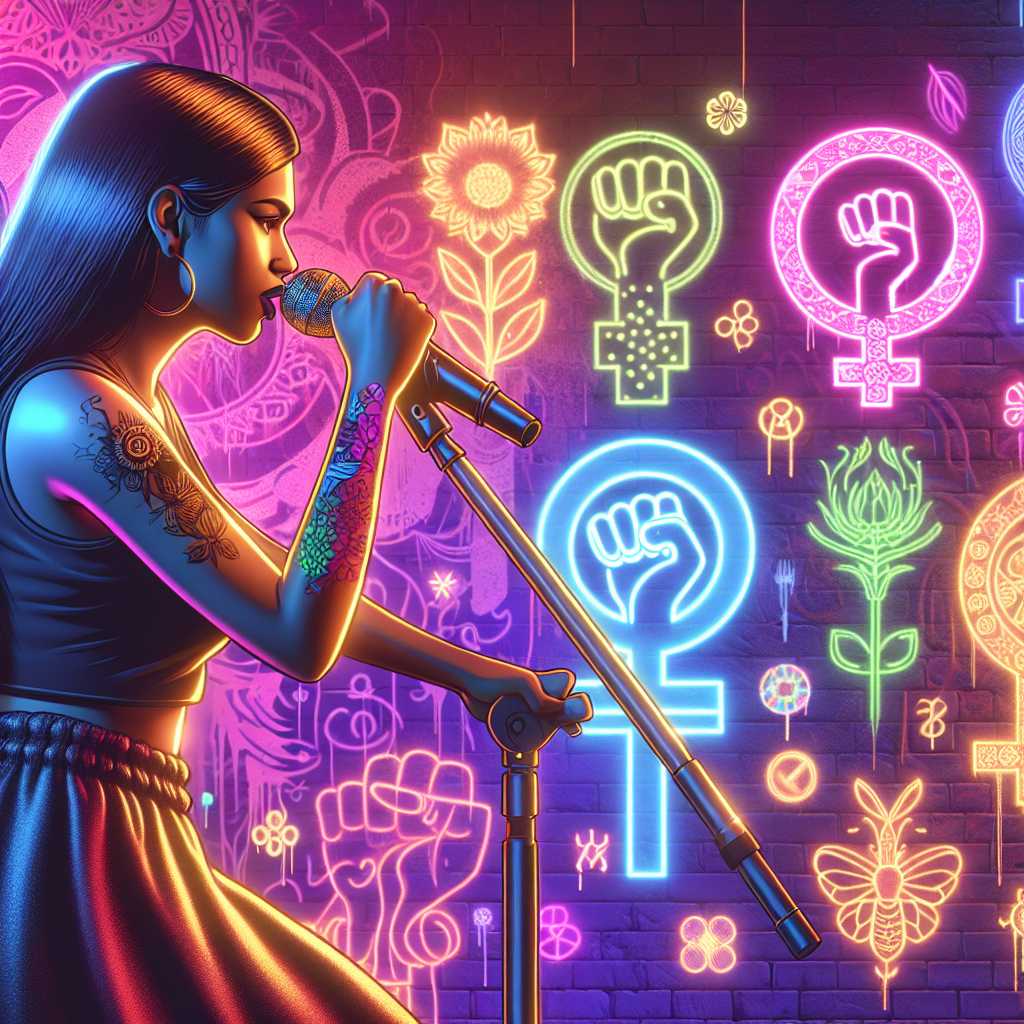Example Article
The Intersection of Hip-Hop and Feminism
Hip-hop has long been a powerful cultural movement, shaping music, fashion, and social discourse since its emergence in the 1970s. Traditionally dominated by male voices, the genre has often faced criticism for perpetuating misogynistic lyrics and imagery. However, over the past few decades, female artists within hip-hop have challenged these norms, carving out spaces that celebrate female empowerment, autonomy, and complex identities. This intersection between hip-hop and feminism has given rise to what is commonly referred to as "hip-hop feminism," a nuanced framework that embraces both the genre’s raw energy and feminist ideals.
Artists like Queen Latifah, Lauryn Hill, and Missy Elliott pioneered this movement by addressing gender inequality while maintaining authenticity within hip-hop’s stylistic boundaries. They created music that not only resonated with a wide audience but also questioned societal expectations of women in the industry. More recently, figures such as Nicki Minaj and Cardi B have continued this legacy, blending assertiveness with vulnerability to redefine what it means to be a woman in hip-hop.
Azealia Banks fits into this lineage as a controversial yet undeniably talented artist whose work reflects many of these themes. Her lyrical dexterity and genre-blending sound challenge traditional structures in hip-hop and electronic music alike. While her public persona has often overshadowed her artistry, her contributions highlight the complexities faced by women navigating fame, creativity, and personal expression within a male-dominated industry.
Artistry Amidst Controversy: Azealia Banks’ Impact on Music and Culture
Azealia Banks emerged as a formidable force in music with her breakout single "212," which combined sharp lyricism with infectious dance beats. Her ability to fuse hip-hop with electronic and house music elements positioned her uniquely within contemporary music scenes. This cross-genre versatility reflects a broader trend among modern artists who defy categorisation to create innovative sounds.
However, Banks’ career has been punctuated by public disputes and outspoken social commentary that often drew media attention away from her musical achievements. These controversies have sparked debates about separating an artist’s personal behaviour from their creative output—a question increasingly relevant in today’s digital age.
Despite polarising opinions about her personality, Banks’ influence on younger artists is evident. She represents a rebellious spirit unafraid to confront industry norms or societal expectations. Her unapologetic approach to identity politics, mental health discussions, and racial issues contributes to ongoing dialogues about authenticity in art. In this sense, Banks embodies the complicated realities of being a woman of colour in the spotlight while pushing artistic boundaries.
The Broader Movement: Women Reclaiming Space in Hip-Hop
The challenges faced by Azealia Banks highlight wider systemic issues within hip-hop culture regarding gender dynamics. Women artists often contend not only with sexism but also with pressures to conform to specific images or narratives dictated by industry gatekeepers. Despite these barriers, there has been notable progress as more women assert control over their careers through independent labels, social media platforms, and direct fan engagement.
This empowerment movement is visible in how female rappers address topics such as sexuality, mental health, and social justice through their lyrics and public personas. These artists reclaim derogatory language or stereotypes to subvert traditional power structures rather than reinforce them. Moreover, collaborations among women in hip-hop foster solidarity and collective advancement—a sharp contrast to earlier eras characterised by rivalry-driven media portrayals.
Consequently, the current landscape offers more diverse representations of womanhood within hip-hop than ever before. The genre’s evolution reflects broader cultural shifts towards inclusivity and self-definition, signalling hopeful trends for future generations of female artists.
Conclusion: Redefining Legacy Beyond Headlines
Examining Azealia Banks’ career provides insight into the complex terrain inhabited by women in hip-hop today. Her artistic innovations contribute meaningfully to genre evolution even as her polarising public image complicates her legacy. This duality underscores an essential truth about contemporary culture—the necessity of recognising multifaceted human experiences rather than simplistic narratives.
More broadly, the rise of hip-hop feminism challenges outdated perceptions about gender roles within music and society at large. It encourages audiences to engage critically with content while appreciating diverse voices that enrich cultural expression. As female artists continue to break barriers and redefine norms, their stories offer valuable lessons about resilience, creativity, and empowerment.
Ultimately, moving beyond headlines allows for a deeper appreciation of how artists like Azealia Banks shape conversations around identity, art, and social change—highlighting the ongoing evolution of both hip-hop and feminism.
Notes
- Women accounted for nearly 30% of top-charting hip-hop tracks in 2024—a record high.
- Hip-hop feminism emerged as a distinct academic framework in the late 1990s.
- "212" by Azealia Banks amassed over 100 million streams worldwide within its first decade.
- Female-led collaborations in hip-hop increased by 45% from 2020 to 2025.

